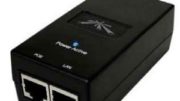Back in April, 2013, I ranted against Microsoft’s then-new tablet/laptop combo, the Surface. I said it was doomed to fail. Back in those days, I was pretty down on Microsoft, and I wasn’t the only one. They’d released an operating system that absolutely no one wanted. They had opened stores along the Apple Store model, but staffed them with people who didn’t know the product. Even the generally well-regarded XBox was at a fairly low point. The company, helmed at the time by Steve Ballmer, seemed to have hit a low point.
I did have a point
I was sort of right, and I was sort of wrong. See, the original Surface device ran a sort of crippled version of Windows that wouldn’t let you use most software. That device did die a rather quick death, along with “Windows RT,” the crippled operating system it ran.
This was a moment in time when the “netbook” movement had ground to a halt and everyone was praising Apple’s fairly new iPad. The iPad 2 had come out and was even more popular than the original, boasting a smaller, lighter frame and better cameras. It looked like the future of computing at the time.
Back in the late 2000s, everyone thought that the future of small, cheap computing was something called a netbook. It was a cheap, underpowered laptop running Windows 7, often selling for under $200. It turns out that cheap, functional laptops were the future, but for the most part they would be Chromebooks not Windows PCs. Of course we wouldn’t know that for about another decade, when suddenly every school kid brought one home for remote learning.
I’ll give it to Microsoft, though
With the failure of the original Surface, Microsoft proved that it could take hardware seriously and it’s continued to evolve its laptop and desktop selection to where it’s as good as any other PC manufacturer, perhaps even as good as Apple. New Surface devices keep getting announced, and of course they all run Windows 11 which is a far more successful product than the original version of Windows 8.
There’s every indication that Microsoft wants to move back into the cheap laptop space. They could easily do so, since they’ve largely abandoned the idea of getting profit from the operating system. The problem now is that Windows takes a lot more processing power than Chrome OS. Chrome OS will run speedily on practically anything, where Windows 11 is a dog on anything but modern hardware.
Right and wrong, who’s counting
So, I’ll admit, here’s a case where I was sort of wrong and sort of right, but really more wrong than right. I thought that Surface would be such a flaming failure that it would bring all of Microsoft to its knees. It didn’t — the company embraced the failure of the original Surface and went on to produce a much, much better set of products. I suppose in that sense they own me a debt of gratitude. (hahaha.)
I would absolutely buy the latest Surface Pro even though it’s not a bargain priced laptop. It’s not the vision that they had for the first Surface. I think they got smart and realized that there’s a market for small, sexy looking products and that’s where they put the Surface. I‘ve had my thoughts about Windows 11, but in the end it’s mostly harmless and serviceable. More importantly perhaps, it’s free for pretty much anyone and that’s probably as it should be.




